Eye On Apparel: Sustainability Or Bust
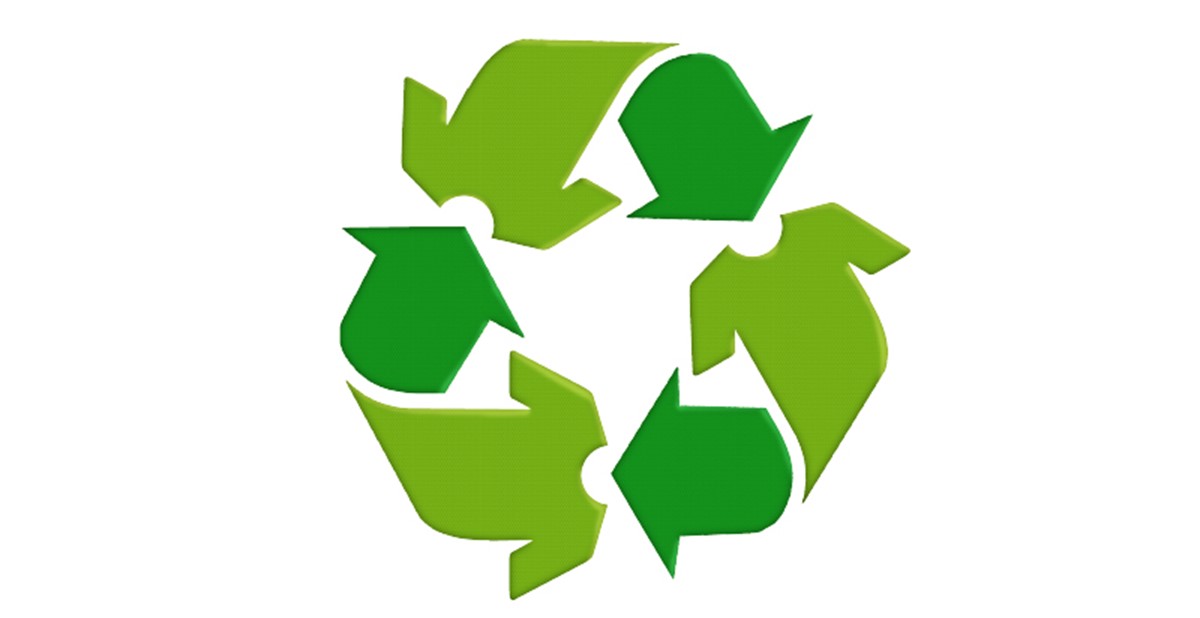
Demand for sustainable products remains high and cannot be ignored, even in the face of inflation and rumors of recession. Survey after survey shows that consumers want sustainable products and practices.
A 2021 global consumer survey conducted by the IBM Institute for Business Value and the National Retail Federation found that 40% of consumers seek products and services aligned with their values. Further, 60% are willing to change their shopping habits to reduce environmental impact, and of the 80% who say sustainability is important for them, nearly 3 in 4 would pay a premium for sustainable and environmentally responsible brands.
From the employer/employee perspective, sustainability is also a great retention strategy, as younger workers are especially likely to expect their employers to be responsible corporate citizens. Although millennials are leading the way as both consumers and employees, the desire for sustainability tracks across all age groups.
Suppliers and distributors of promo products must pay attention or risk falling behind the curve. But there’s good news, particularly when it comes to sustainable branded apparel, as more and more eco-friendly fabrics and garments have become available in recent years.
So, “sustainability” is clearly important – but what does this big, buzzy umbrella term mean on a practical level? Key elements of a sustainable business model include:
Circularity: What Goes Around Comes Around
Ensuring sustainable consumption and production patterns is No. 12 on the list of United Nations Sustainable Development Goals, adopted in 2015, with specific targets including “substantially reduce waste generation through prevention, reduction, recycling and reuse.”
Irys Kornbluth, CEO of Everywhere Apparel, a supplier of recycled cotton garments (mostly made in Los Angeles), says the promo apparel market is uniquely suited to adopt a circular model of production, usage and recycling.
“Companies want to clothe their employees in their branded merchandise and spread the word about their brand, but to do so in a way that’s sustainable and circular,” she says. “This is really a great area to do that in, because there’s a lot of repeated production, a lot of the same goods that are being produced on an ongoing basis.”
Everywhere makes all its garments from recycled cotton yarn, and the company offers garment recycling as a service as well. This doesn’t only keep unwanted or discarded garments out of the landfill – by some estimates, the average American throws out 80 pounds of clothing a year – but gives those materials a new life.
“If we’re doing a custom run for a distributor or whatnot in the network and they end up having a few pallets leftover or merchandise that didn’t get sent out to the field, we can help them recycle that back into new products,” says Kornbluth. “So it’s minimizing the risk of overproduction and also helping to address those problems if they do come up.”
Cleaner Operations: Reduce Energy And Water Usage, Emissions
Cleaning up production operations in your supply chain also makes a big difference. The more garment suppliers and distributors expect their business partners to participate in sustainable initiatives, the easier, less expensive and more accessible these processes will become for everyone in the industry.
Doug Jackson, president of Minnesota-based supplier Storm Creek, tried dipping his toes into recycled fabrics about a decade ago. At first, it was slow going because he didn’t have enough volume to demand sustainable yarns and fabrics from Storm Creek’s suppliers. But he kept asking, and eventually more options became available.
“At that point we decided that we could, as a company, start putting a big force toward trying to do everything recycled,” Jackson says. “Once we realized that we could do that, we started looking at the whole supply chain and saying, OK, can we as a company start saying that we need certification from all of our fabric mills, from all of our dyeing mills, from all of our yarns, from every part of the channel?”
Although it was still “a big boys’ game,” he adds, awareness and demand were growing, and the kinds of recycled and eco-friendly materials he was looking for were getting easier to come by. It’s all about volume, he says – there has to be enough demand to make it worth the effort for everyone in the supply chain.
Storm Creek also started asking all of its suppliers to commit to earning Bluesign and OEKO-TEX certifications, both of which reduce harmful chemicals and wastewater pollution
“We want all of our mills to be OEKO-TEX certified or Bluesign certified, and really what that means is that they just use better chemicals for the environment,” Jackson says.
Certifications: What To Look For In Your Suppliers And Their Products
In fact, there are multiple certification programs and other measures of sustainability to look for. Here are four of the biggest:
- Bluesign helps manufacturers better manage dyes and water usage. The company conducts on-site assessments to help clients understand the environmental and chemical management status of their facility, and a specific action plan is created to close any gaps observed during the assessment.
- OEKO-TEX develops test methods and standards to support sustainable measures in the textile industry. Compliance with OEKO-TEX Standard 100 can earn your garments a label indicating that every component – from threads to buttons to printings and coatings—has been tested for and cleared of harmful substances.
- EcoVadis is a universal sustainability ratings provider that helps companies manage program and performance reviews, supplier selection and onboarding, procurement process changes and more, including tools to help promote your company’s green initiatives.
- You may have seen the B Corp logo on a company website recently and wondered what it means. B Corp Certification, managed by the nonprofit B Lab, is a CSR designation that a business can earn by meeting standards for performance, accountability and transparency on factors from employee benefits to supply chain practices.
Communicate: Make Sure Your Customers Know About Your Sustainable Efforts
The IBM study authors suggest that to do sustainability right, companies need to recognize consumer demand, incorporate sustainable initiatives like those described above throughout your operations and earn customers’ confidence through transparency and traceability.
Once you’ve taken these steps toward sustainability, be sure to promote your efforts and certifications with messaging and product/packaging labels to inform buyers and end users. For example, supplier Gildan reports its sustainability, circularity and environmental achievements online. Everywhere and Storm Creek also highlight their sustainability practices on their websites.
“Younger people are becoming more of an influence, and they just look at things in a different way that made more people want to think about it,” says Jackson. “We all can do more nowadays. The price is not as crazy as it used to be, and it’s more available.”
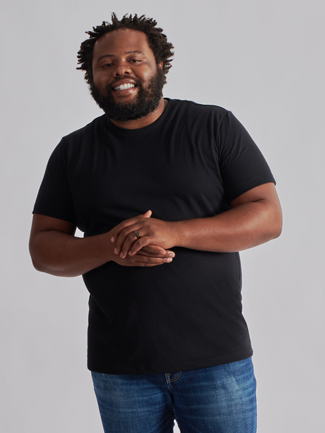
The 100% GRS Certified Recycled Cotton Unisex Crew Tee from Everywhere Apparel is a soft and sustainable T-shirt designed to be recycled at end of life and reincorporated into the company’s supply chain. Available in white or black, sizes XS-3X. Each shirt includes a QR code to help wearers recycle it and other clothes.
Everywhere Apparel / PPAI 795141, S1 / www.everywhereapparel.com
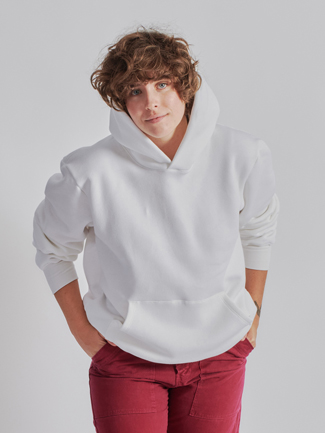
Like Everywhere’s tees, the company’s 100% Recycled Cotton Unisex Pullover Hoodie is made of recycled fibers and without dyes, bleach, fertilizers or pesticides. This classic hoodie sweatshirt features a kangaroo pocket and a lined hood without drawstring. Available in white, gray or black, sizes XS-3XL.
Everywhere Apparel / PPAI 795141, S1 / www.everywhereapparel.com
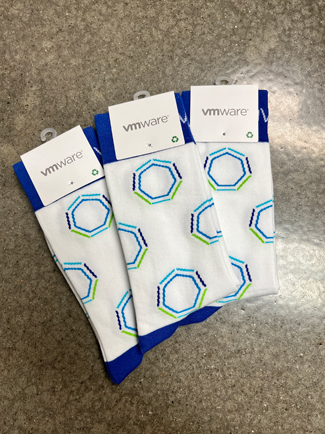
Don’t forget your tootsies! Go for a total custom product with the ability to knit complex logos and patterns on these Sustainable Custom Knitted Dress Socks. Recycled cotton yarn from old garments or leftover fabrics prevents additional textile waste and requires far fewer resources than conventional or organic cotton. Socks are woven from 80% recycled cotton, 18% nylon and 2% spandex.
SOCK101 / PPAI 625402, S6 / www.sock101.com
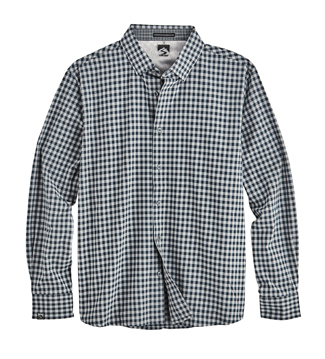
Storm Creek offers a variety of button-down dress shirts made from recycled yarns, including the Men’s Influencer Gingham Shirt. The four-way stretch lets you move with ease and keeps the fabric wrinkle-free. The quick-dry fabric also features UV protection. Available in blue or black (shown) and sizes S-5X, as well as L-2X tall.
Storm Creek / PPAI 438091, S6 / www.stormcreek.com
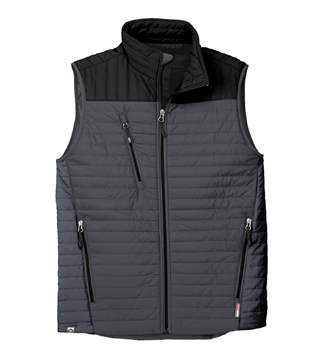
Each bestselling Men’s Front Runner Vest contains seven recycled bottles with 40% of the outer shell and 35% of the insulation from recycled materials. The water-resistant, windproof, quilted vest provides warmth without bulk and includes zippered chest/front pockets and an interior embroidery pocket. Available in six colors (shown in jet/black) and sizes S-5X, as well as L-3X tall.
Storm Creek / PPAI 438091, S6 / www.stormcreek.com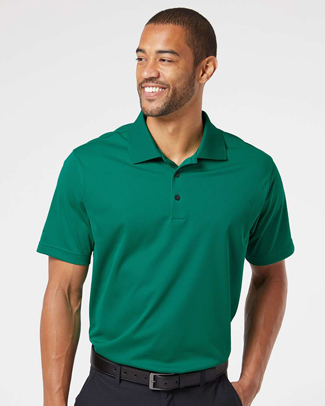
Adidas has pledged to use only recycled polyester in all its products by 2024. The Adidas Golf Basic Short Sleeve Sport Shirt features classic athleisure style in 100% recycled polyester with UPF 25 protection and a moisture wicking finish. Available in 16 colors (shown in Amazon) and sizes S-4X.
S&S Activewear / PPAI 256121, S12 / www.ssactivewear.com
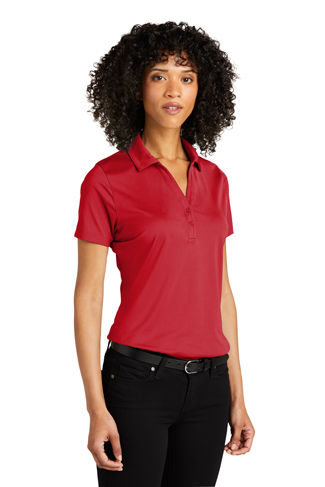
With its C-FREE line, SanMar measures the carbon footprint of each style and purchases verified carbon offsets to remove an equivalent amount of emissions elsewhere in the environment. The Port Authority Ladies Recycled Performance Polo Shirt is made of certified recycled materials, from the 100% recycled poly pique fabric to the thread. These shirts also provide snag-resistance, moisture-wicking and UV protection in five colors (shown in rich red) and sizes XS-4X.
SanMar / PPAI 110788, S16 / www.sanmar.com
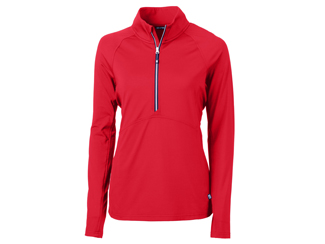
The lightweight, brushed fleece Cutter & Buck Adapt Eco Knit Stretch Recycled Womens Half Zip Pullover is made of certified eco-friendly 88% recycled polyester – with an average of 16 recycled plastic bottles in each garment – plus spandex for stretch. Sizes XS-3X, 12 colors (shown in red).
Cutter & Buck / PPAI 196156, S11 / www.cbcorporate.com
Zoch is an associate editor at PPAI.

